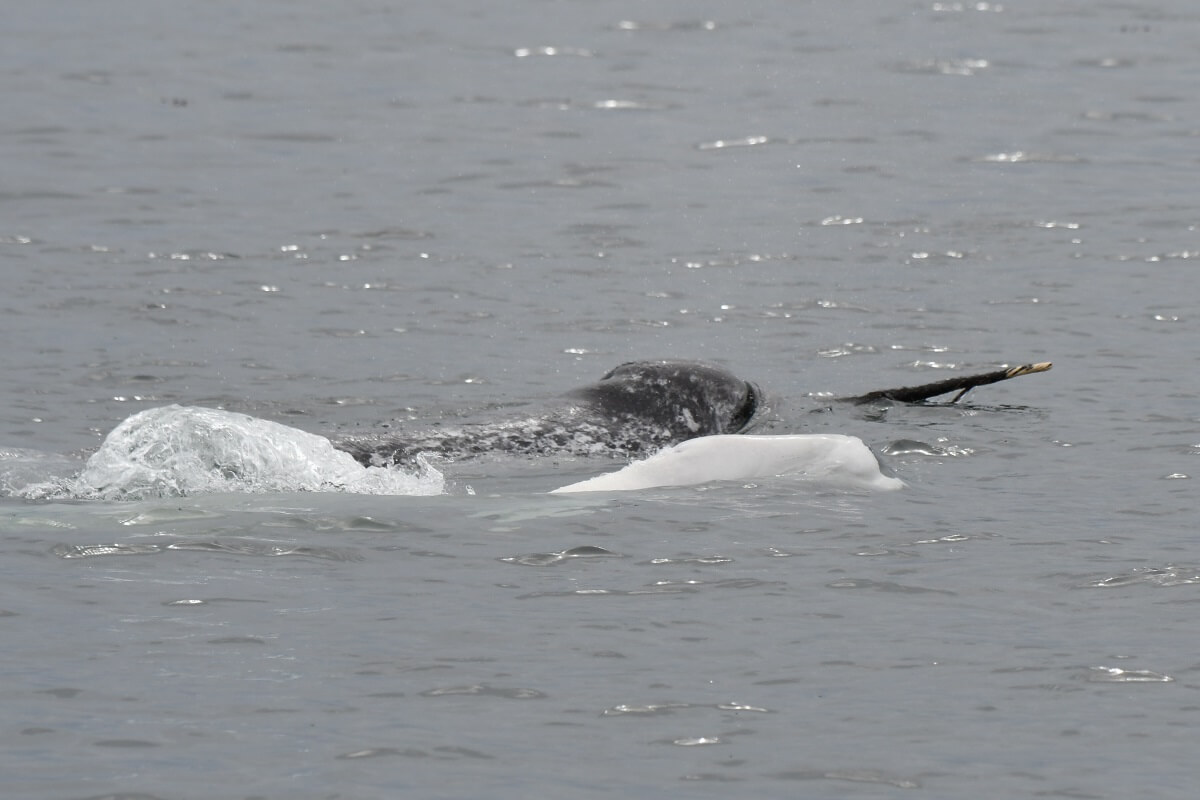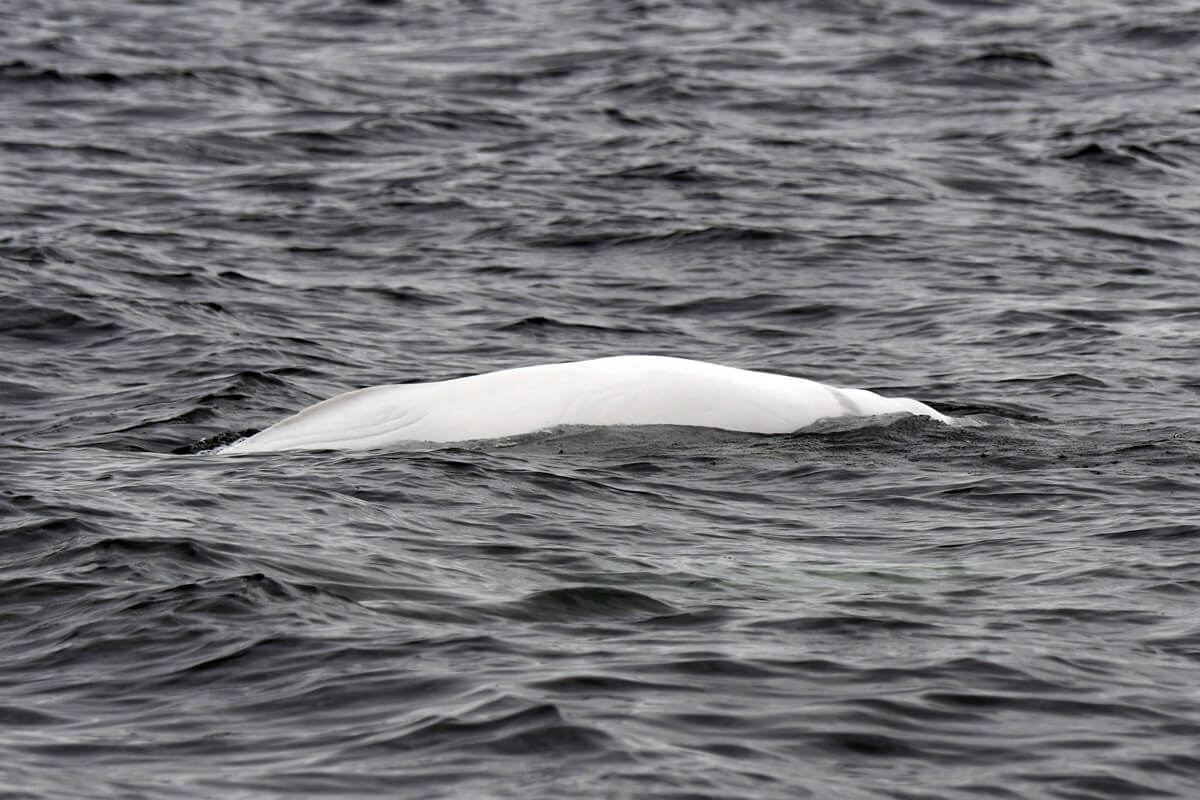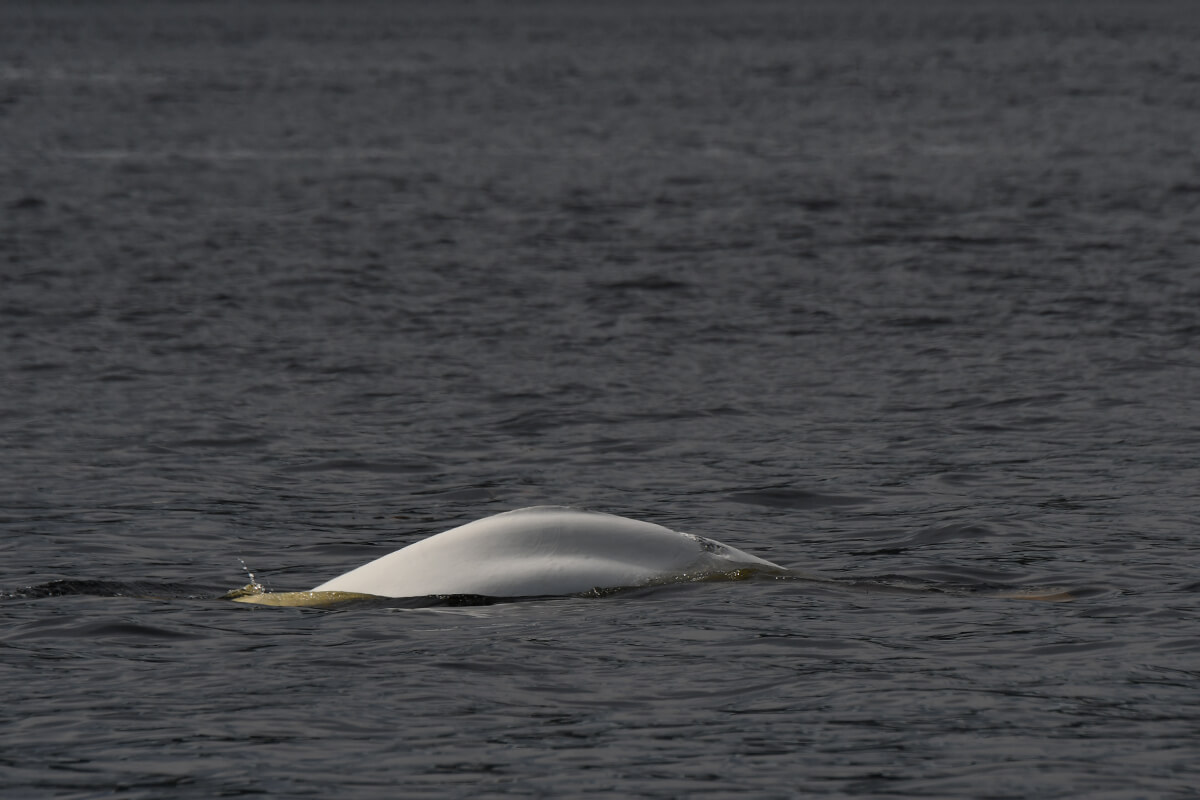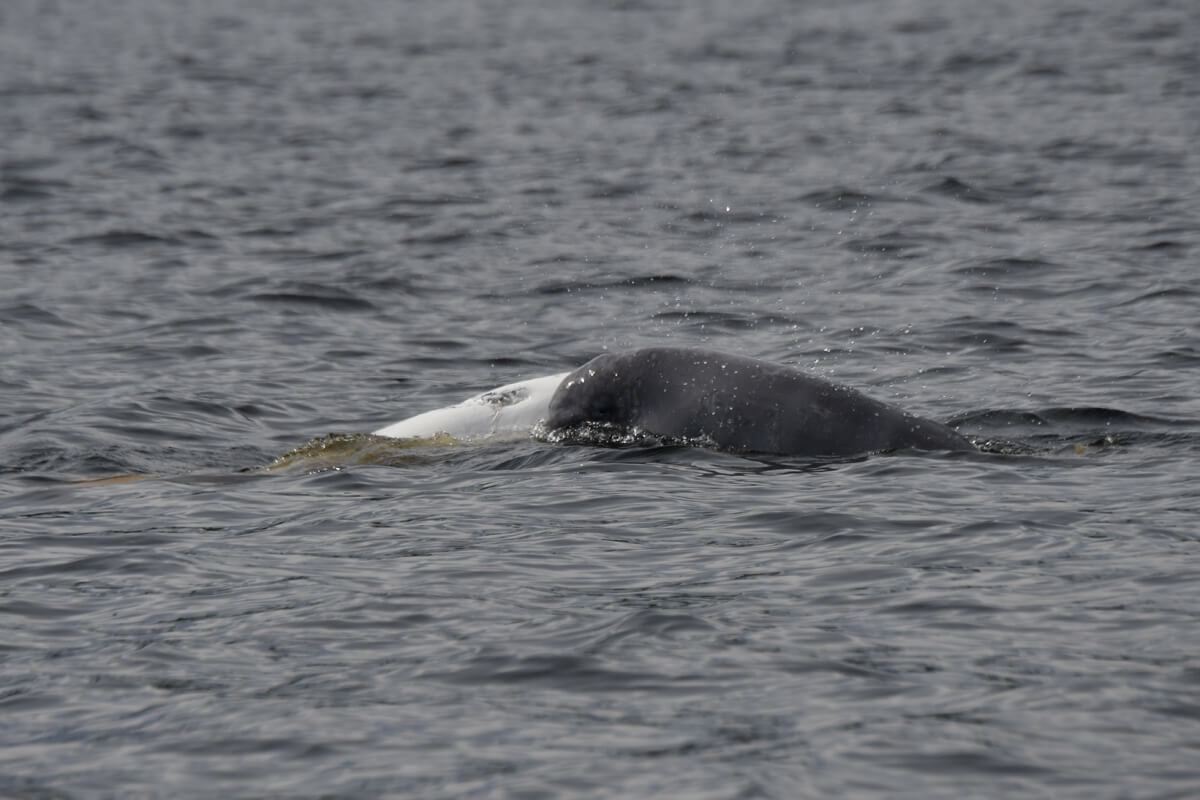Field notes written in collaboration with Laurence Tremblay
A field season full of surprises is coming to an end for GREMM’s research team. Despite health measures that threw a serious wrench in the gears of our field work and the recurrent mechanical problems experienced by GREMM’s fleet, we nevertheless managed to pursue our research programs. Evidently not aware of all of our difficulties, the whales were plentiful! We even had a pleasant surprise with the visit of Wolf, one of the last 356 remaining North Atlantic right whales, and the sighting of the narwhal for the fifth consecutive year.
We will therefore offer a recap of two highlights that marked the end of our season.
Belugas and large rorquals
On a cold October morning, GREMM’s research craft BpJAM was covered in frost. We set out toward Kilo 51 downstream of Île Rouge in the hope of finding a few belugas and identifying them via photo-ID techniques. After about ten minutes of scanning the horizon, we spot a few white backs downstream of our position, over the southern cliff of the Laurentian Channel. In these same waters, we encountered Miss Frontenac a few days earlier. We approach them and estimate the herd to number around forty animals, including juveniles and adults. We manoeuvre our craft to approach the belugas and start snapping pictures. We quickly spot an animal with a unique collar-shaped marking that we have been tracking since 2007: Dl2595.
But as we continue along the southern cliff, our belugas can be seen mingling with a group of seven highly active fin whales swimming in tight formation: among them is notably Ti-Croche (Bp955), Bp959 and an individual with a satellite tag on its dorsal fin. Additionally, in the same area, we encounter a pair of humpbacks: H918 as well as an as-yet unidentified juvenile.
Snow-white belugas
Last week arrived quickly. The weather has hardly been favourable for some time now: we go out whenever conditions allow, which means less and less. One morning when calm weather was in the forecast, we tried our hand at the Estuary, but the winds quickly shifted and conditions made it impossible to perform our job efficiently.
We therefore head for the Saguenay Fjord and its high cliffs, which provide shelter from the gusts. We cross paths with a herd of around twenty belugas downstream of Cap de la Boule. Quickly, we spot a conspicuous animal that is well known to our team: It’s Yogi, a female that we’ve been tracking since 1986.
The herd comprises numerous juveniles, recognizable by their grey colouring, as well as two calves, whose dark pigmentation is more reminiscent of café au lait. However, we could not identify the mothers of the calves, as the latter did not appear to associate with any specific individuals.
Three weeks eariler, we observed in the same area a female by the name of Céline, whom we’ve known since 1987. At her sides was a bleuvet, or second-year calf. Is Céline the mother? Before this can be confirmed, one would have to study photos taken in 2019 and this year to make sure the calf has been observed with her multiple times.












